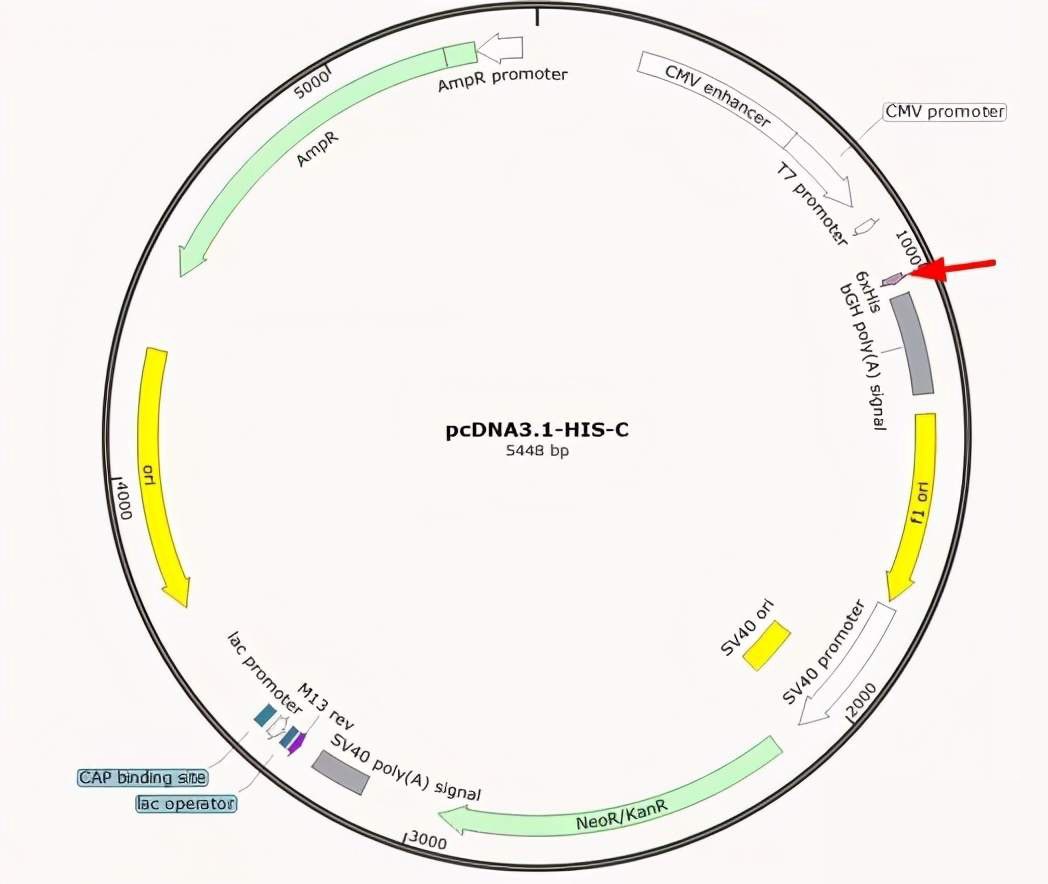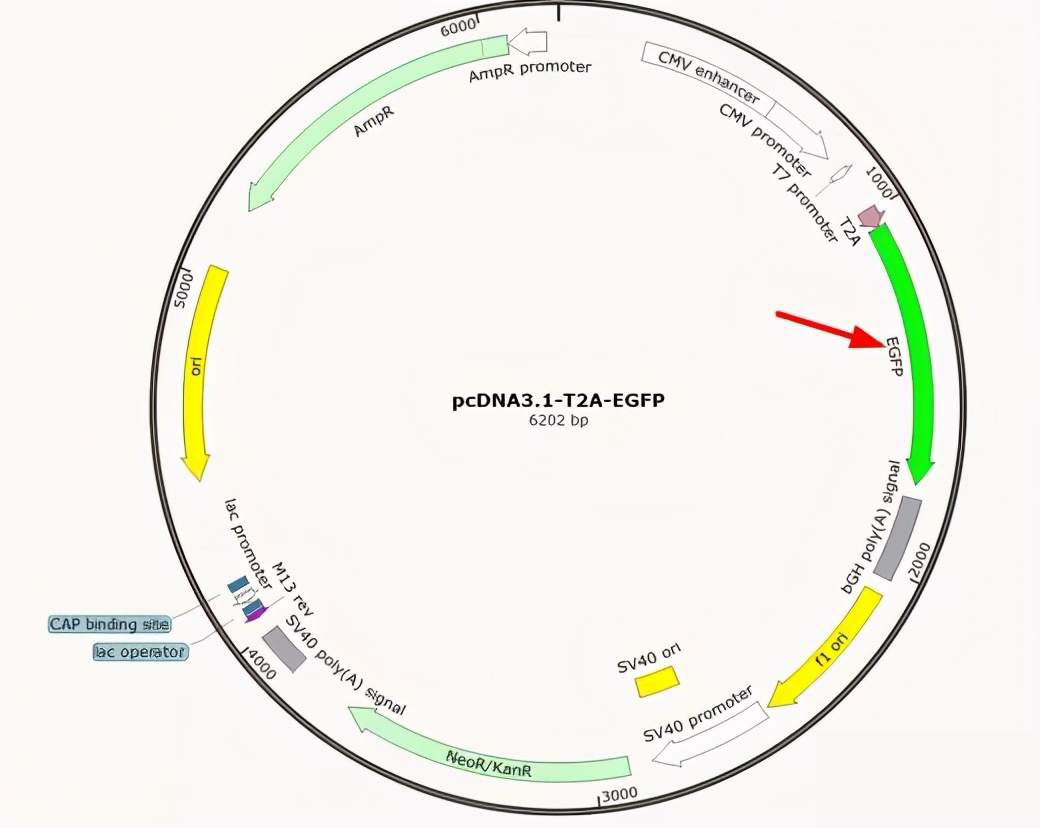In the field of biological scientific research, you often come into contact with the little thing called plasmid, and when you find the map of this little thing after a lot of hard work, you will find that there are a lot of messy arrows on the map, as well as a lot of English , such as what ORI, Amp, etc., what do these things mean? Today, the editor will give you a detailed answer here.
First of all, I would like to introduce the four elements contained in the plasmid map.
1. The origin of replication: controls the replication of the plasmid and determines the host and copy number of the plasmid
2. Screening markers: mostly resistance genes for detection and screening
3. Multiple cloning sites: insertion sites for foreign genes
4. Other elements: such as transcriptional regulatory elements, translational expression elements and protein tags, etc.
The following uses the commonly used pcDNA3.1(+) expression vector as an example
Step 1: Understand the origin of replication in the plasmid map
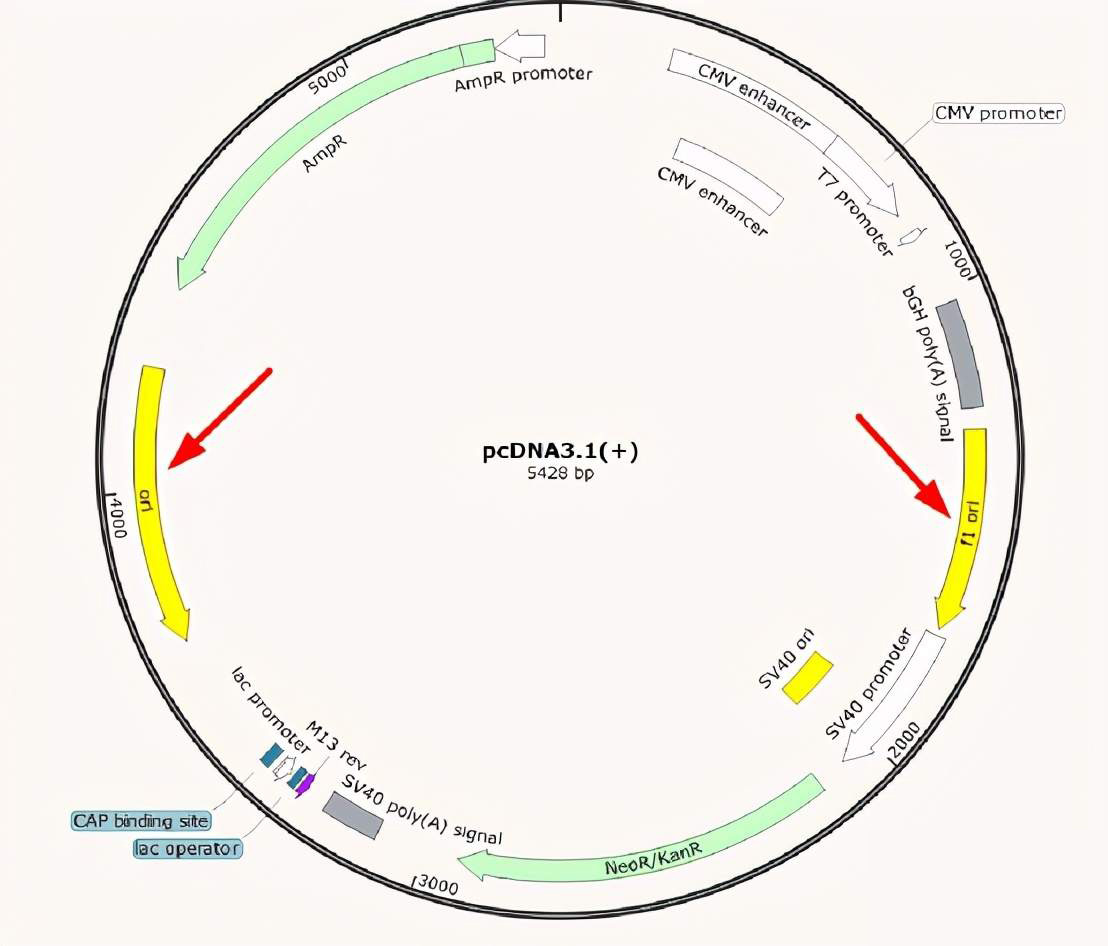
The ori in the above map represents the origin of replication of the plasmid. The origin of replication of the plasmid determines the host of the plasmid and the copy number of the plasmid. If there is only one ori on the map, it means that the plasmid is a prokaryotic clone and expression plasmid. There are two oris on the map, which means that the plasmid is a shuttle plasmid, which can replicate in both prokaryotic and eukaryotic cells.
Step 2: Understand the selection markers in the plasmid map
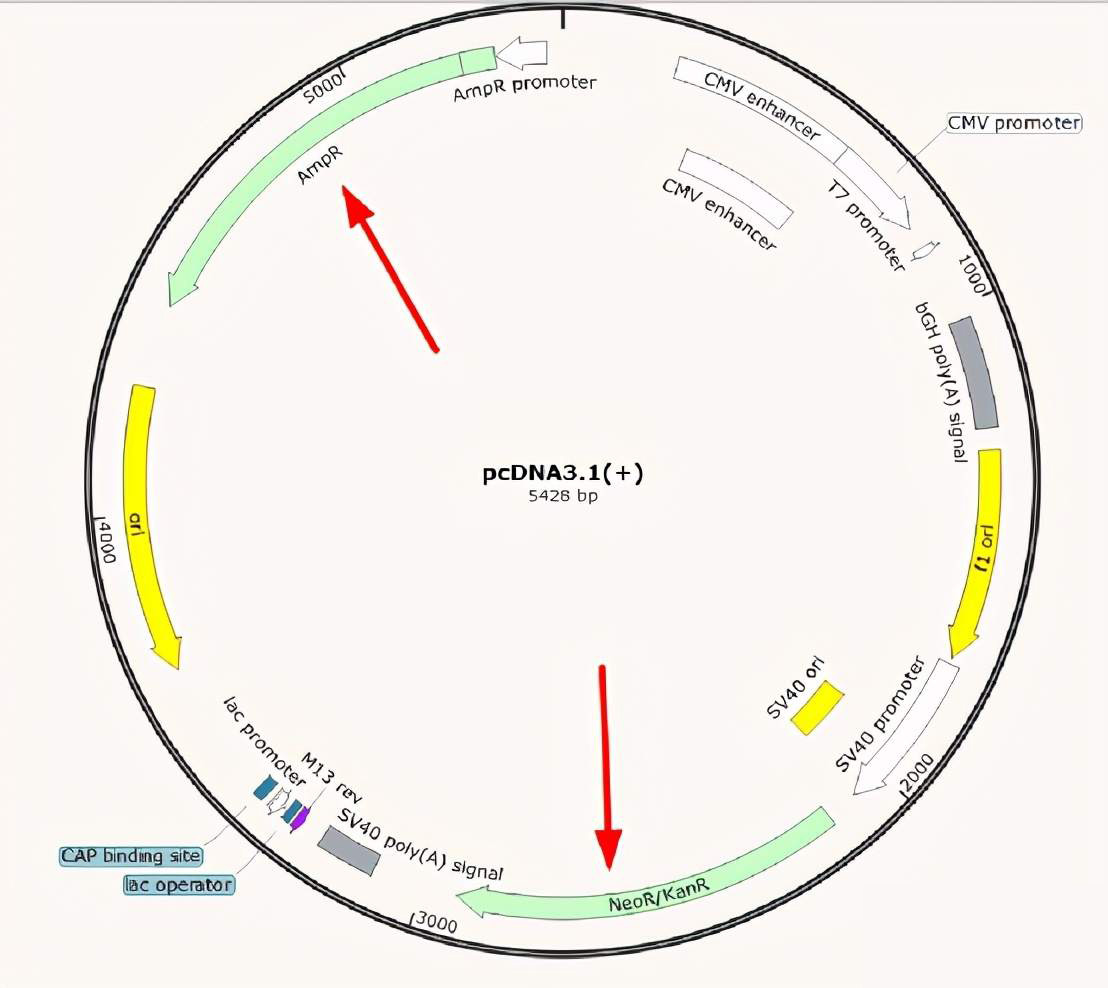
AmpR, KanR, etc. in the map represent the screening tags in the plasmid vector, which are mostly antibiotic resistance genes, which are convenient for subsequent screening of positive clones by antibiotics. Plasmids with only single resistance are mostly prokaryotic cloning vectors and prokaryotic expression vectors. However, those with two or more resistances are mostly shuttle plasmids.
Step 3: Understand the Multiple Cloning Sites in the Plasmid Map
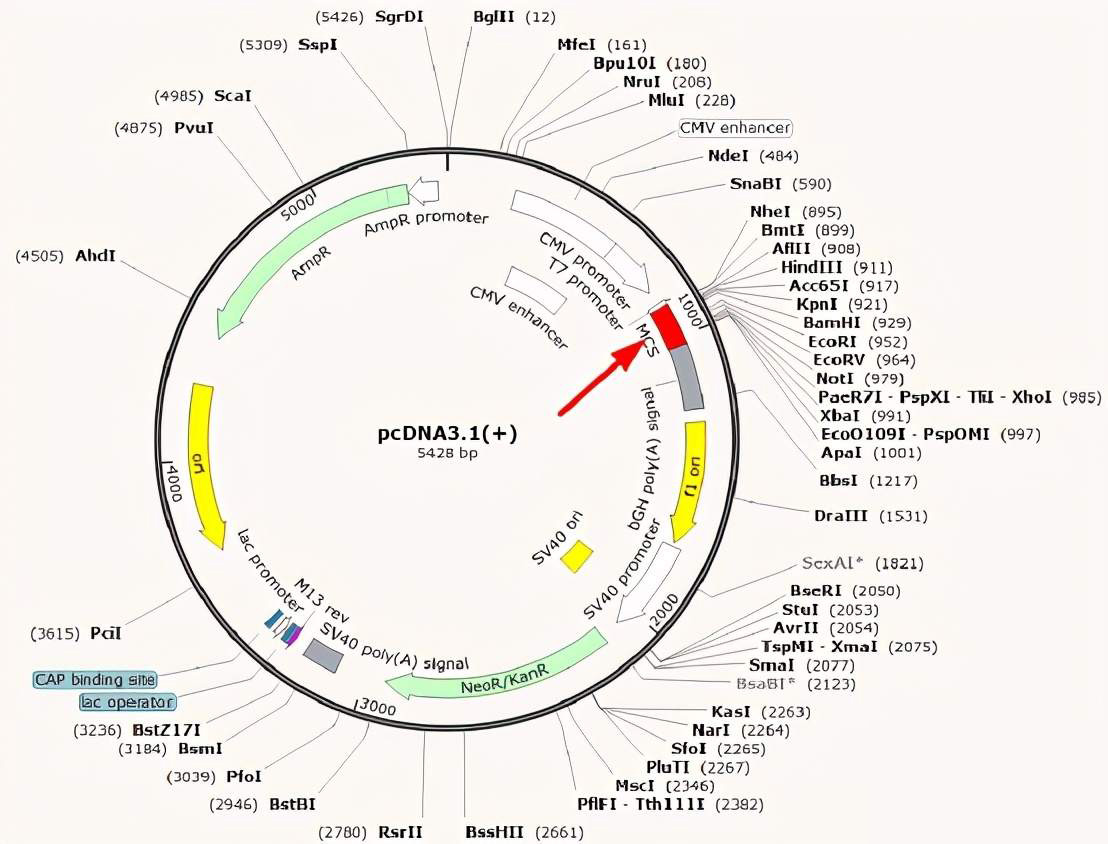
The MCS region in the map or the concentrated part of many endonucleases is the multiple cloning site of the plasmid. The multi-cloning site is a series of restriction endonuclease digestion sites, which are the insertion sites of exogenous DNA. Generally, the exogenous DNA can be inserted into the plasmid by means of restriction enzyme digestion and ligation. Multiple cloning sites are generally located between transcription initiation and transcription termination signals.
Step 4: Learn about other elements in the plasmid map
In addition to the origin of replication, selection marker, and multiple cloning sites, plasmid vectors also have other expression or regulatory elements, such as transcriptional regulatory elements, translational regulatory elements, and fusion expression tag proteins. for example:
Protein purification tag protein: His-Tag, GST-tag, etc.
Protein detection tag proteins: Myc-Tag, Flag-Tag, HA-Taq, etc.
Fluorescent protein expression tags: GFP, mCherry, etc.
